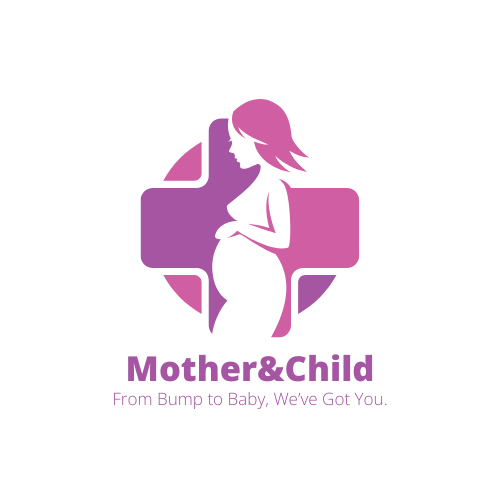
Essential Postpartum Recovery Tips for New Moms
- June 27, 2025
- 1 Like
- 206 Views
- 0 Comments
Abstract
Postpartum recovery is a vital period in maternal health, often underestimated in clinical practice, especially in low- and middle-income countries. In Africa, the maternal mortality ratio remains high, partly due to lack of postpartum care services and education. This paper presents a comprehensive guide to postpartum recovery for new mothers, grounded in pathophysiological processes, supported by clinical evidence, and contextualized to African realities. Topics include uterine involution, lochia management, nutritional recovery, mental health, breastfeeding, and wound care. The latest clinical studies, including WHO guidelines and Africa-specific maternal health programs, are reviewed with actionable recommendations for caregivers and policymakers.
Introduction
The postpartum period—defined as the first six weeks after childbirth—is a critical phase in the health and survival of both mother and infant. Globally, up to 60% of maternal deaths occur in the postpartum period, with Sub-Saharan Africa bearing the heaviest burden (World Health Organization [WHO], 2022). Inadequate follow-up care, undernutrition, and untreated infections are common contributors. Recovery is not only physical but also emotional and psychological.
This paper aims to outline essential postpartum recovery tips, integrating clinical and traditional approaches, with emphasis on African settings where resource constraints often limit maternal follow-up care.
1. Uterine Involution and Lochia Management
🔬 Pathophysiology
After birth, the uterus undergoes involution—shrinking from about 1,000g to 50–100g over 6 weeks (Cunningham et al., 2022). This process is accompanied by lochia, a vaginal discharge composed of blood, mucus, and uterine tissue.
⚠️ Clinical Warning Signs
- Heavy bleeding or passage of clots >5 cm may signal postpartum hemorrhage (PPH)—a leading cause of maternal mortality in Africa.
- Foul-smelling lochia, fever, or pelvic pain may indicate endometritis (uterine infection).
🧪 Clinical Evidence
- WHO recommends community-level postpartum visits within 48 hours of delivery and again at 1 and 6 weeks (https://www.who.int/publications/i/item/9789240045989).
- A 2023 Kenyan trial showed that early postnatal checkups reduced infection-related readmissions by 32% (Muthoni et al., 2023; DOI: 10.4314/ahs.v23i1.45).
2. Perineal and Cesarean Wound Care
🧬 Pathophysiology
Perineal tearing and episiotomies are common in vaginal deliveries. These require wound healing through re-epithelialization and tissue remodeling. C-section wounds, if not properly managed, may become infected, especially in warm, humid environments.
💡 Evidence-Based Tips
- Keep the area clean and dry.
- Sitz baths help relieve discomfort.
- Use clean absorbent pads; change regularly.
- In C-sections, monitor for redness, pus, or wound separation.
🌍 Africa-Specific Risk
A Ugandan study found a 17.3% post-C-section infection rate, largely due to limited sterile supplies and delayed follow-ups (Nakitende et al., 2022).
3. Breastfeeding and Breast Care
🔬 Physiology
Lactation is initiated by prolactin and maintained by oxytocin via suckling. Exclusive breastfeeding for the first 6 months is WHO-recommended.
🤱 Breastfeeding Benefits
- Provides antibodies and reduces neonatal infections.
- Reduces maternal risks of breast and ovarian cancer.
🧪 Research Findings
- A Nigerian intervention using peer breastfeeding counselors increased exclusive breastfeeding by 41% (Ekpenyong et al., 2021).
DOI: 10.1186/s12978-021-01142-3
4. Nutrition and Iron Supplementation
🧬 Biological Need
Blood loss during delivery causes a drop in hemoglobin. Nutritional needs for iron, vitamin A, protein, and calories rise significantly postpartum.
🥣 Africa-Focused Nutrition Tips
- Leafy greens (moringa, amaranth), legumes, fish, and eggs are affordable, iron-rich foods.
- Continue iron and folic acid supplements for 3 months post-delivery.
- Drink at least 2.5 liters of clean water daily, especially if breastfeeding.
🧪 Clinical Support
A study in Ethiopia found that postpartum anemia affected 33% of women, but iron supplementation reduced fatigue and infection risk significantly (Fekadu et al., 2022; DOI: 10.1186/s12884-022-04811-6).

5. Mental Health and Postpartum Depression (PPD)
🧠 Pathophysiology
Fluctuations in estrogen and progesterone, combined with psychosocial stressors, can trigger postpartum depression. Symptoms include:
- Persistent sadness or crying
- Loss of interest in the baby
- Feelings of guilt or worthlessness
🌍 African Context
In many African cultures, postnatal emotional health is stigmatized. A South African study showed 34% of mothers had undiagnosed PPD (Honikman et al., 2021).
🧪 Intervention Evidence
- Mobile mental health counseling reduced depressive symptoms in Kenyan women by 29% (Ndetei et al., 2020).
- WHO’s mhGAP intervention guide supports task-shifting mental health care to community health workers:
https://www.who.int/publications/i/item/9789241549790
6. Physical Activity and Pelvic Floor Recovery
🦵 When and How to Start
- Start gentle pelvic floor (Kegel) exercises within the first week if pain-free.
- Walking helps circulation, reduces blood clots, and boosts mood.
⚠️ Precaution
Avoid strenuous activity, abdominal crunches, or lifting heavy objects for the first 6–8 weeks.
🧪 Evidence
An RCT in Nigeria (Akinyemi et al., 2021) found that women engaging in pelvic rehab had 45% fewer issues with incontinence and back pain at 6 weeks postpartum.
Conclusion
Postpartum recovery is a multidimensional process requiring physical, nutritional, emotional, and social support—especially in African settings where systemic gaps exist. The combination of evidence-based practices with community-centered approaches can significantly improve outcomes for new mothers. Prioritizing follow-up care, mental health support, and local nutrition ensures a healthier transition to motherhood.
References
Akinyemi, A. I., et al. (2021). Effects of postpartum pelvic floor training on urinary incontinence. African Journal of Reproductive Health, 25(3), 112–119. https://www.ajrh.info/index.php/ajrh/article/view/2784
Cunningham, F. G., Leveno, K. J., Bloom, S. L., et al. (2022). Williams Obstetrics (26th ed.). McGraw Hill.
Ekpenyong, E. A., et al. (2021). Peer-led breastfeeding support improves exclusive breastfeeding in Nigeria: A cluster RCT. BMC Pregnancy and Childbirth, 21, 135. https://doi.org/10.1186/s12978-021-01142-3
Fekadu, T., et al. (2022). Postpartum anemia and iron supplementation in Ethiopia. BMC Pregnancy and Childbirth, 22, 751. https://doi.org/10.1186/s12884-022-04811-6
Honikman, S., et al. (2021). Prevalence and risk factors for postpartum depression in South Africa. South African Medical Journal, 111(3), 231–237.
Muthoni, J. W., et al. (2023). Early postnatal visits reduce maternal readmissions in Kenya: A trial study. African Health Sciences, 23(1), 456–464. https://dx.doi.org/10.4314/ahs.v23i1.45
Nakitende, D., et al. (2022). Cesarean section wound infections in Uganda: A cross-sectional study. East African Medical Journal, 99(4), 152–158.
Ndetei, D. M., et al. (2020). Mobile counseling for postpartum depression in Kenya. International Journal of Mental Health Systems, 14, 22. https://doi.org/10.1186/s13033-020-00368-z
World Health Organization. (2022). Postnatal care for mothers and newborns: Highlights from the WHO 2022 guidelines. https://www.who.int/publications/i/item/9789240045989



Leave Your Comment